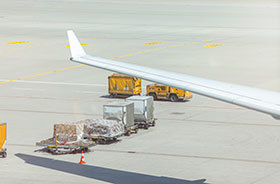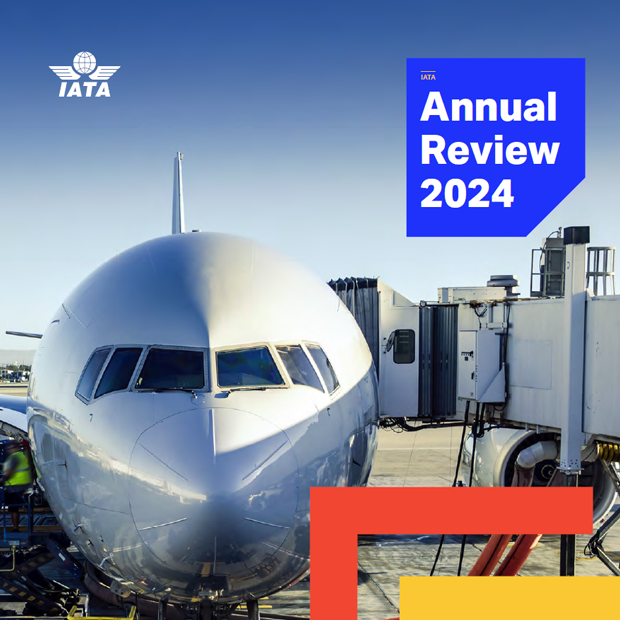
Translations: 国际航协:9月航空货运需求增长1.9% 保持温和增势 (pdf)
La demanda de carga aérea aumenta un 1,9% en septiembre en un entorno de crecimiento moderado (pdf)
ارتفاع الطلب على الشحن الجوي بنسبة 1.9% في سبتمبر مع الحفاظ على زخم نمو معتدل (pdf)
Le fret aérien en hausse de 1,9 % en septembre, poursuivant l’élan de croissance modérée (pdf)
Demanda de carga aérea sobe 1,9% em setembro, mantendo o ritmo de crescimento moderado (pdf)
Geneva - The International Air Transport Association (IATA) released data for September 2023 global air cargo markets, showing continuing demand recovery.
Global demand, measured in cargo tonne-kilometers (CTKs*), increased by 1.9% compared to September 2022 levels (+6% for international operations).
Capacity, measured in available cargo tonne-kilometers (ACTKs), was up 12.1% compared to September 2022 (+0% for international operations). Growth was largely related to international belly capacity which rose 31.5% year-on-year as airlines scaled up operations to meet peak-northern summer travel season demand.
Several factors in the operating environment should be noted:
- In September, both the manufacturing output Purchasing Managers Index or PMI (49.7) and new export orders PMI (47.7) saw a slight improvement to the previous month. They remained, however, below the critical 50-point threshold, indicating a continuing, but slightly slower, annual decline in global manufacturing production and exports.
- Global cross-border trade contracted for the fifth month in a row in August, decreasing 3.8% year-over-year. This reflects the cooling global macroeconomic environment.
- Annual growth in US consumer prices stabilized in September at 3.7%, the same rate as in August. In Europe and Japan consumer price inflation slowed by 1.0 and 0.2 percentage points, respectively, to 4.9% and 3.0%, (also respectively). In China, deflation-fighting policy measures saw an annual rise in consumer prices of 0.1%.
- In September, the average price of jet fuel was USD 131.0 per barrel, marking a 43.1% increase from the May 2023 price. Recouping some of this added cost from surcharges in September contributed to the first increase in air cargo yields since November 2022.
"Air cargo eked out modest growth (1.9%) in September despite falling trade volumes and high jet fuel prices. That clearly shows the strength of air cargo’s value proposition. With the key export order and manufacturing PMIs hovering near positive territory, we can be cautiously optimistic for a strong year-end peak season," said Willie Walsh, IATA’s Director General.
Air cargo market in detail
| September 2023 (%year-on-year) | World Share *1 | CTK | ACTK | CLF (%-pt) *2 | CLF (level) *3 |
|---|---|---|---|---|---|
| Total Market | 100% | 1.9% | 12.1% | -4.4% | 43.8% |
| Africa | 2.0% | -0.1% | 2.7% | -1.2% | 43.6% |
| Asia Pacific | 32.4% | 7.7% | 30.5% | -9.9% | 46.6% |
| Europe | 21.8% | -1.5% | 4.7% | -3.1% | 50.0% |
| Latin America | 2.7% | 2.3% | 14.4% | -3.8% | 31.9% |
| Middle East | 13.0% | 2.5% | 16.1% | -5.6% | 42.4% |
| North America | 28.1% | -2.2% | 0.2% | -1.0% | 39.2% |
(*1) % of industry CTKs in 2022 (*2) Year-on-year change in load factor (*3) Load factor level
September Regional Performance
Asia-Pacific airlines saw their air cargo volumes increase by 7.7% in September 2023 compared to the same month in 2022. This was a significant improvement in performance compared to August (+4.6%). Carriers in the region benefited from growth on three major trade lanes: Europe-Asia (+9.6%), Middle East-Asia (+7.0%) and Africa-Asia (+12.8%). Available capacity for the region’s airlines increased by 30.5% compared to September 2022 as more belly capacity came online from the passenger side of the business (a year ago, the key Asian markets of Japan and China were still largely under severe COVID-19 travel restrictions).
North American carriers had the weakest performance in September, with a 2.2% decrease in cargo volumes. This was a decline in performance compared to August (-1.4%). Although contractions in the North America-Asia trade lane narrowed (from -4.3% in August to -1.8% in September) and the North America-Europe market stabilized its decline at (-2.5%) for the second month in a row. Carriers in the region did not benefit significantly. Capacity increased moderately by 0.2% compared to September 2022.
European carriers saw their air cargo volumes decline by 1.5% in September compared to the same month in 2022. This was a weaker performance than in August (-0.6%). Carriers in the region suffered from further contractions in the within Europe market (-5.7% in September vs -5.2% in August). Gains made from the expansion in the Middle East-Europe trade lane (+3.3% in September vs +0.5% in August) offset some declines from the within Europe performance. Capacity increased 4.7% in September 2023 compared to 2022.
Middle Eastern carriers had the strongest performance in September 2023, with a 2.5% year-on-year increase in cargo volumes. This was an improvement from the previous month’s performance (+1.3%). Carriers in the region benefited from growth in the Middle East–Asia (+7.0%) and Middle East–Europe markets (+3.3%). Capacity increased 16.1% compared to September 2022.
Latin American carriers experienced a 2.3% increase in cargo volumes compared to September 2022. This was a significant decrease in performance compared to the previous month (+6.2%). Capacity in September was up 14.4% compared to the same month in 2022.
African airlines saw their air cargo volumes decline by 0.1% in September 2023, despite the strong growth of demand on the Africa-Asia trade lane (+12.8%). This was an improvement in performance compared to August (-3.5%). Capacity was 2.7% above September 2022 levels.
> View September 2023 Air Cargo Market Analysis (pdf)
For more information, please contact:
Corporate Communications
Tel: +41 22 770 2967
Email: corpcomms@iata.org
Notes for Editors:
- IATA (International Air Transport Association) represents some 330 airlines comprising over 80% of global air traffic.
- You can follow us at twitter.com/iata for announcements, policy positions, and other useful industry information.
- Fly Net Zero
- Annual General Meeting 2024 media kit
- * Please note that as of January 2020 onwards, we have clarified the terminology of the Industry and Regional series from ‘Freight’ to ‘Cargo’, the corresponding metrics being FTK (changed to ‘CTK’), AFTK (changed to ‘ACTK’), and FLF (changed to ‘CLF’), in order to reflect that the series have been consisting of Cargo (Freight plus Mail) rather than Freight only. The data series themselves have not been changed.
- Explanation of measurement terms:
- CTK: cargo tonne-kilometers measures actual cargo traffic
- ACTK: available cargo tonne-kilometers measures available total cargo capacity
- CLF: cargo load factor is % of ACTKs used - IATA statistics cover international and domestic scheduled air cargo for IATA member and non-member airlines.
- Total cargo traffic market share by region of carriers in terms of CTK is: Asia-Pacific 32.4%, Europe 21.8%, North America 28.1%, Middle East 13.0%, Latin America 2.7%, and Africa 2.0%.

